The wait is over and we have our first look at a 2025 Formula 1 car courtesy of McLaren's Silverstone shakedown.
As you'd expect given the secrecy over new cars, there's only a handful of images available - some from distant angles - but there are still some detail changes that we can pick out if you look closely enough.
There is no guarantee that what was released from the shakedown will be what we see in pre-season testing or what will appear in Australia for the first race, but the budget cap should control most way-out whacky updates too early in the season.
Looking at what we've seen so far, there's one area that immediately grabbed my attention: McLaren has gone to town on its front and rear suspension geometry.
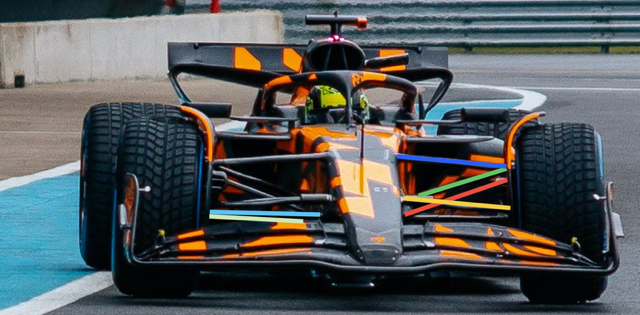
As far as the front suspension is concerned, the upper wishbone rear leg inboard pickup point, highlighted in green above, has been lowered to increase the anti-dive. Some of this change is mitigated by McLaren also lowering the rear leg inboard pickup point, which is highlighted in light green.
Team boss Andrea Stella said most of the changes on the 2025 car are to optimise the aerodynamic package. This overall increase in anti dive using the top wishbone will achieve that, whilst critically still giving the driver reasonable feel for the braking potential of the front tyres.
More on how McLaren's gone 'aggressive' with its 2025 car
The trackrod is separated from the bottom wishbone and is highlighted in yellow. McLaren is still using a pullrod system front suspension, highlighted in red.
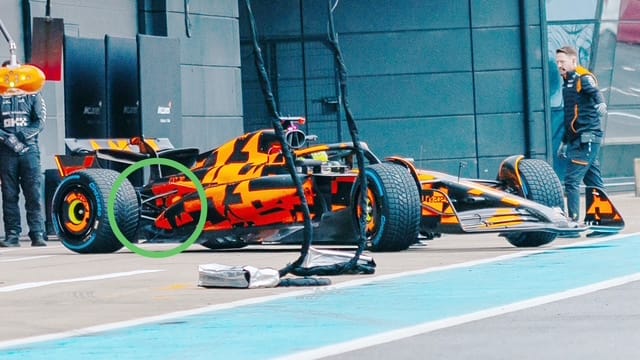
The rear suspension is a lot more difficult to see in detail. However, it does look like the upper wishbone forward leg inboard pickup point, which is highlighted below in dark blue (forward leg highlighted in green), is mounted to the transmission/engine much lower. This increases the anti lift.
Again, as with the front suspension it looks like some of that change is mitigated by McLaren lowering the forward leg inboard pickup point of the lower wishbone, highlighted below in light blue.
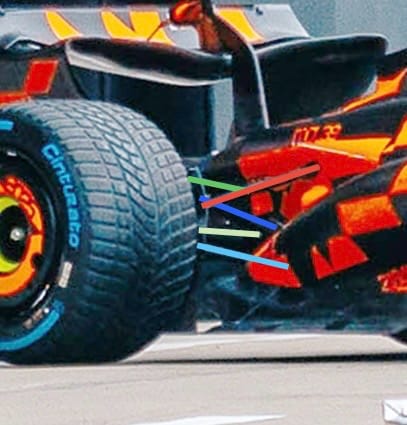
The lower leg and possibly driveshaft shroud is highlighted in light green, with the pushrod highlighted in red.
Sidepod inlet
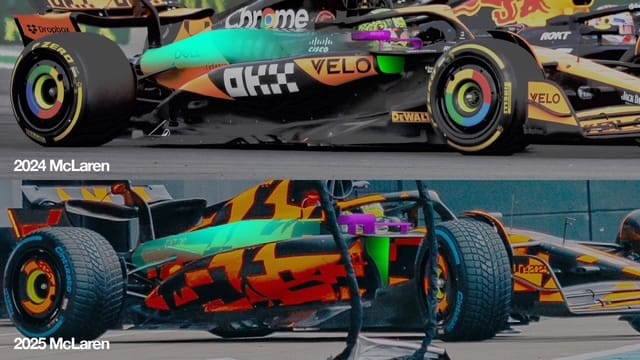
Radiator intake-wise (green highlights above), McLaren has altered the opening to more of an upside down L-shape. This allows it to bleed off the boundary layer that builds up along the slow-moving airflow on the side of the chassis.
This is in line with what Red Bull and Ferrari had last year but more similar visually to how Mercedes went about it in early 2024 (below).
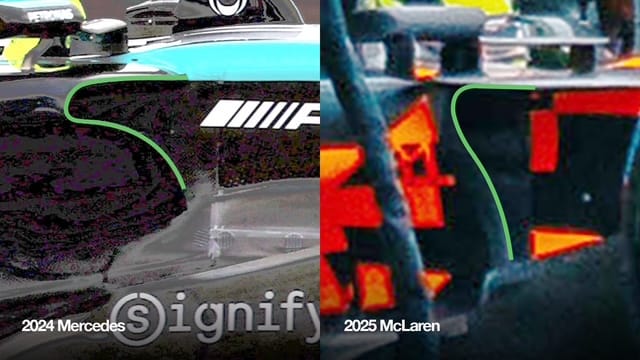
However, as can be seen in the below comparison Mercedes went more towards the Red Bull/Ferrari solution later in the season.
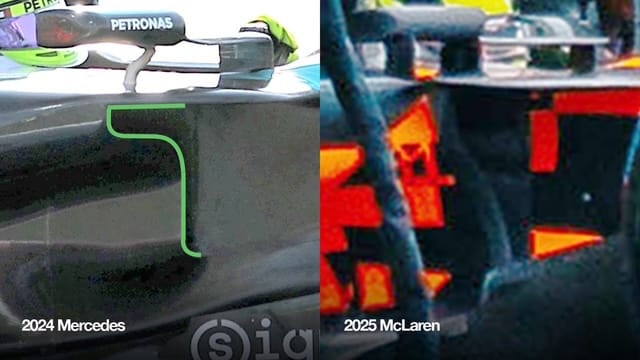
Revised airbox
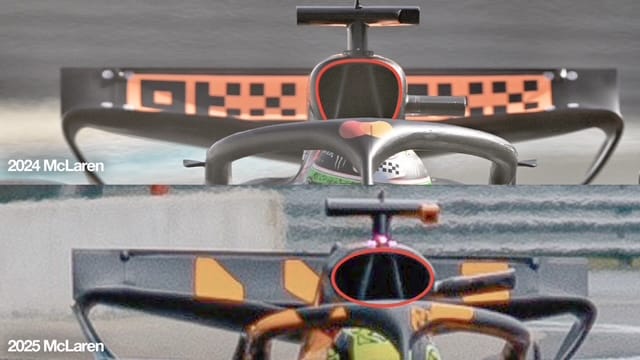
There are probably small detail changes over the car's body surface but the airbox intake is the most visual one. It is slightly wider and appears to be shallower - perhaps McLaren has just been watching the Six Nations, as it's more like a rugby ball shape?
I have always been a fan of this shape and exploited it to the maximum on the Jordan 197. The main reason was to get as much separation as possible between the airflow going around the driver's helmet and the actual intake itself.
This helps the efficiency of what you are trying to do with that intake flow and reduces the driver's helmet buffeting.
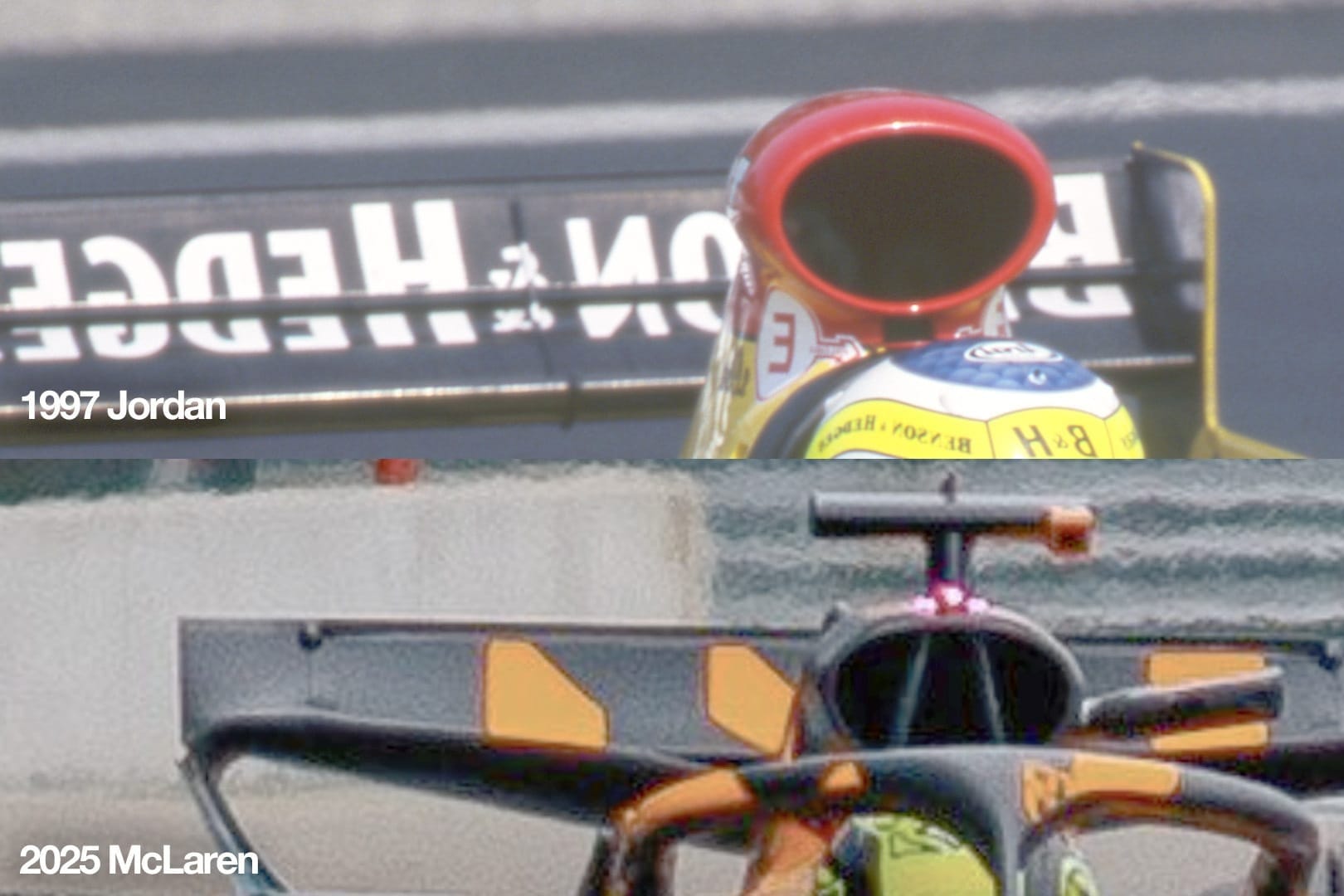
It may also have allowed McLaren to reduce the weight of the rollover bar structure which, with it being the highest part of the car, would be beneficial in lowering the centre of gravity of the complete car.
It's going to be a big year for McLaren. Can it keep the momentum from 2024 into 2025 and achieve both titles this year, or will it simply be just one of probably four or perhaps five competitive teams?
The difference is in the detail, which is something we don't really see that much of - particularly the underfloor - but Stella says McLaren has concentrated its design objective on opening doors and as a group improving its understanding of how to get the best out of these very complicated ground effect cars.
Now all McLaren needs to do is find a way through those doors.



